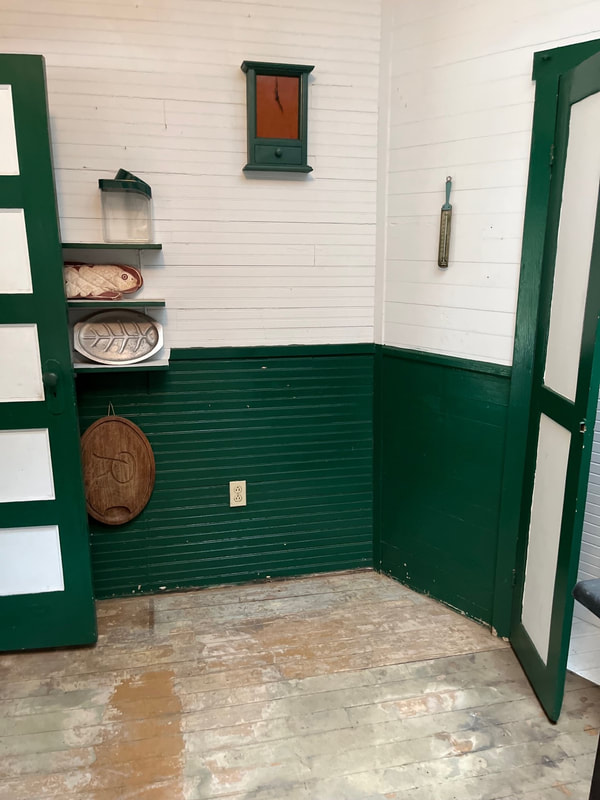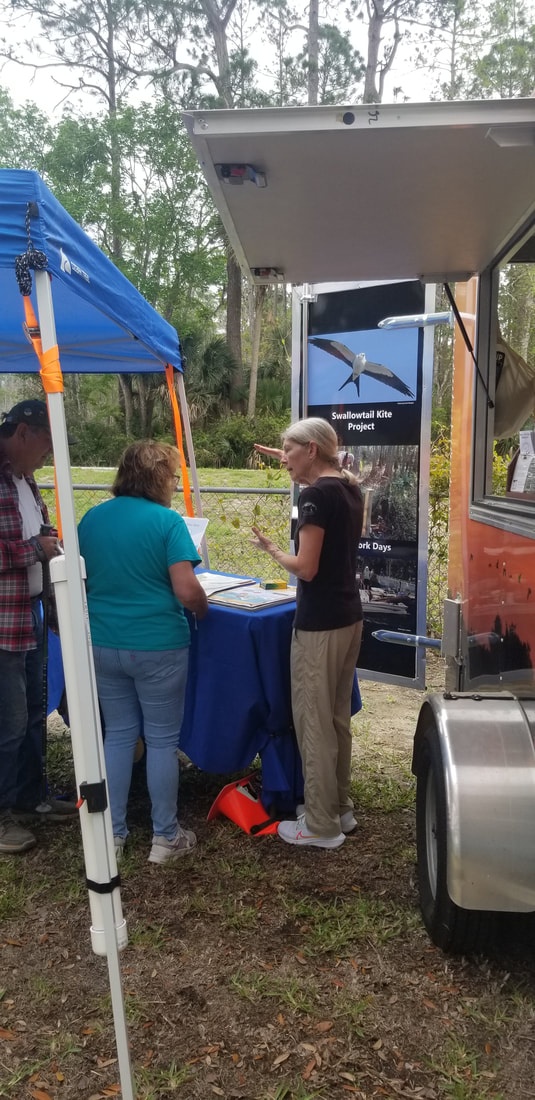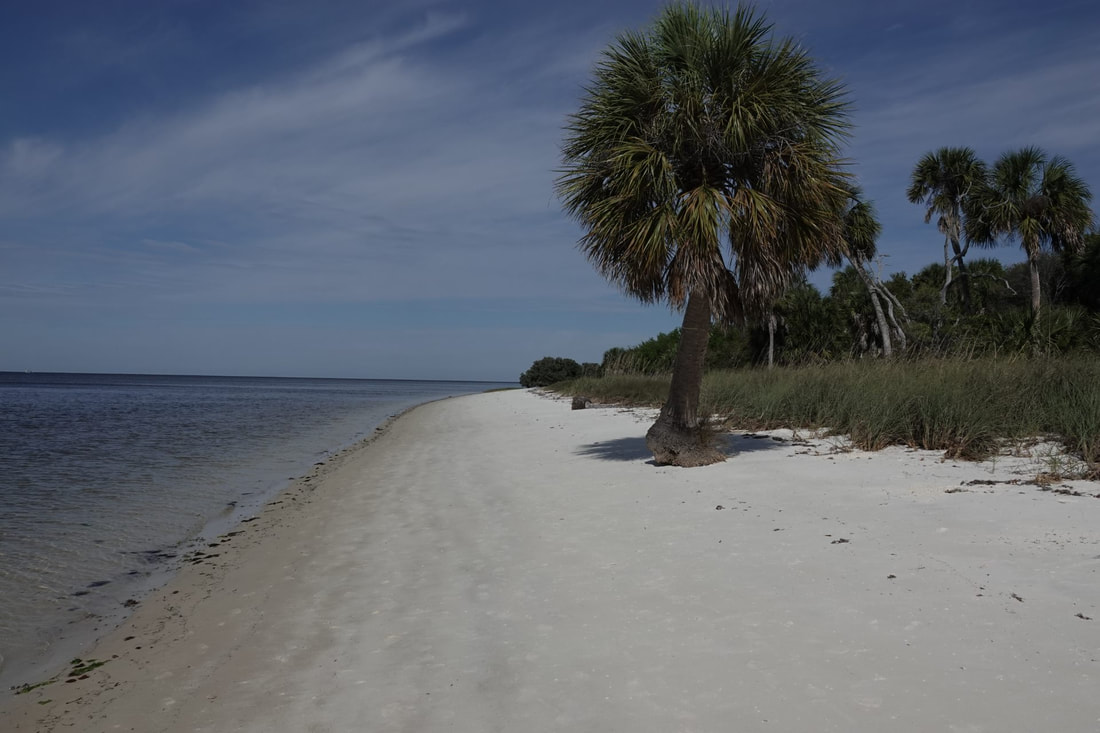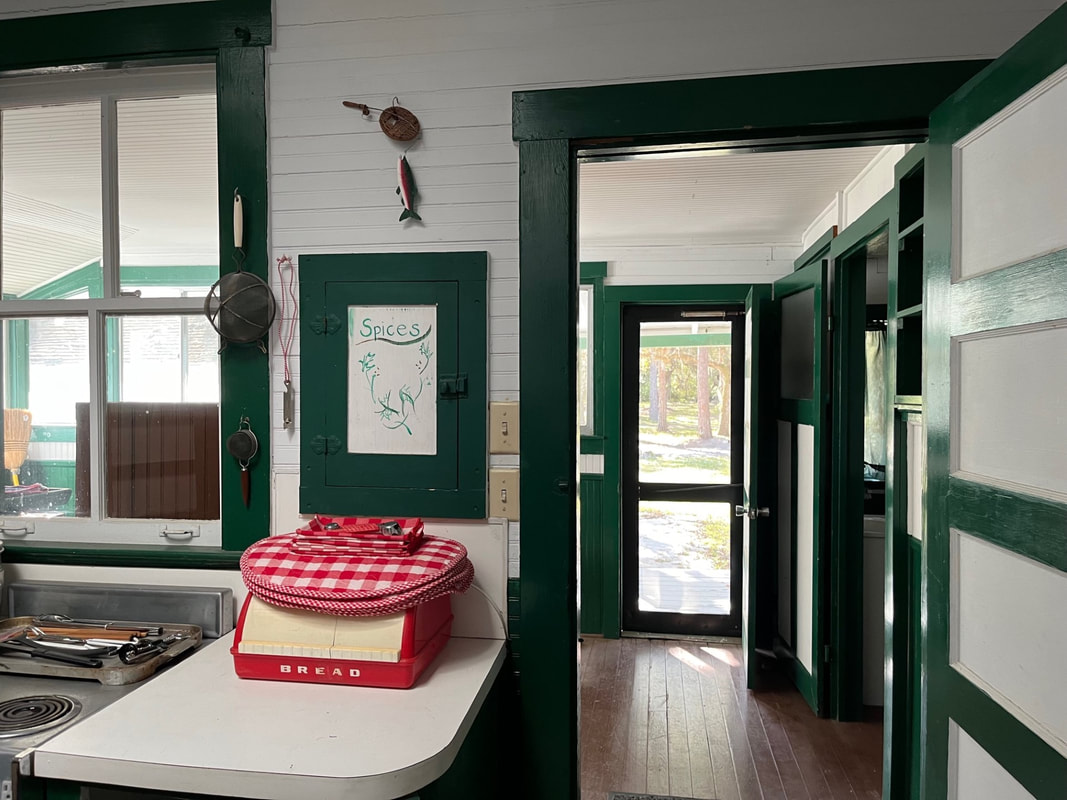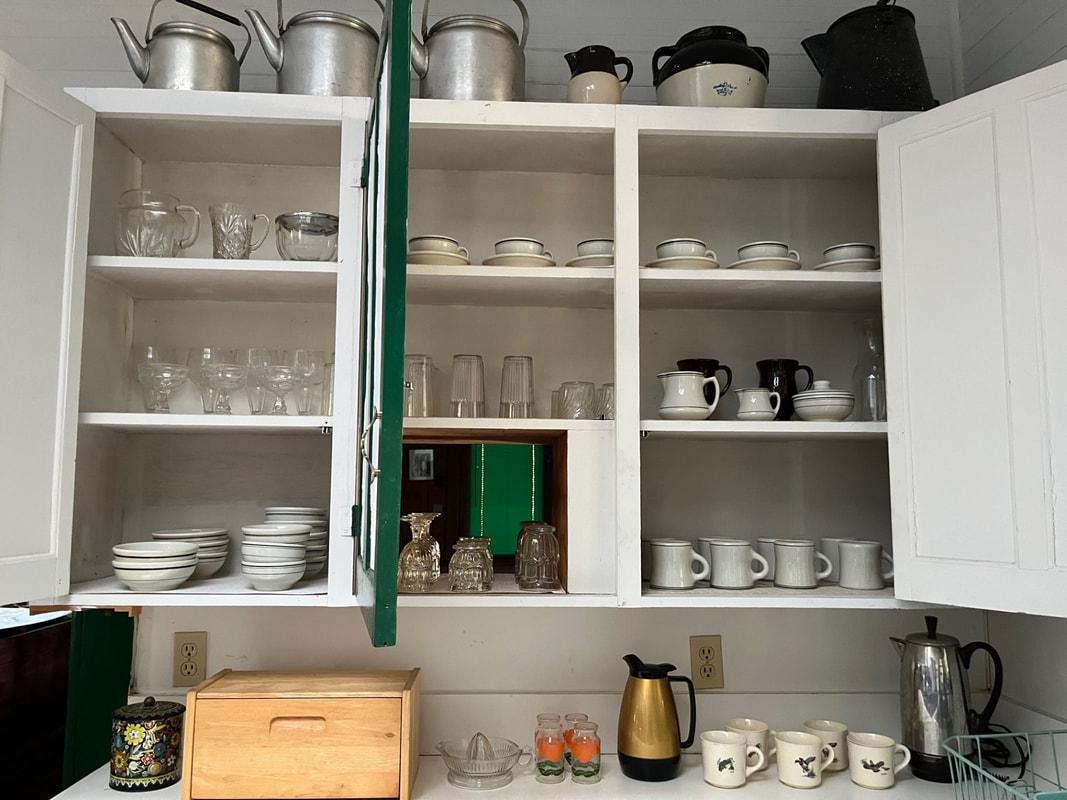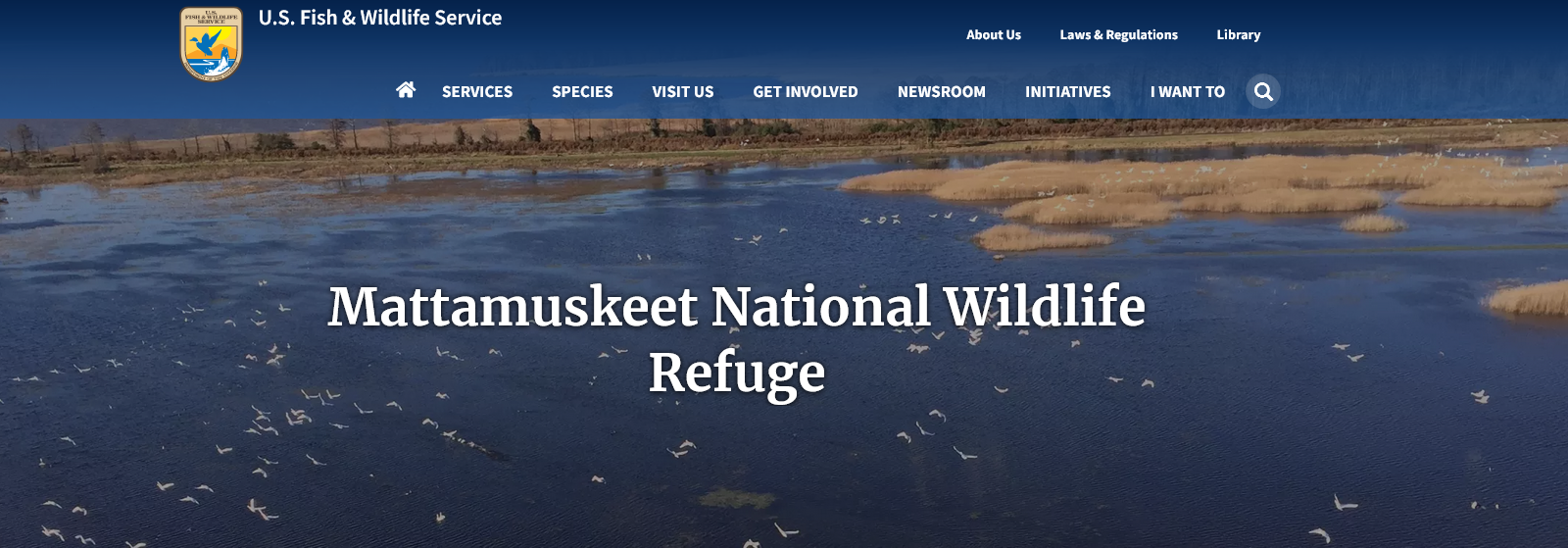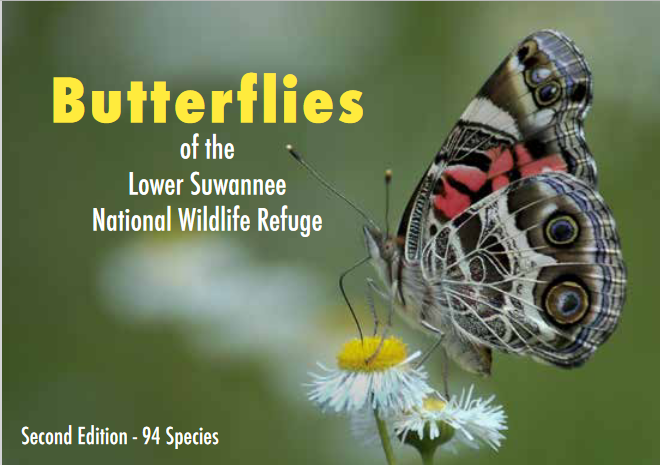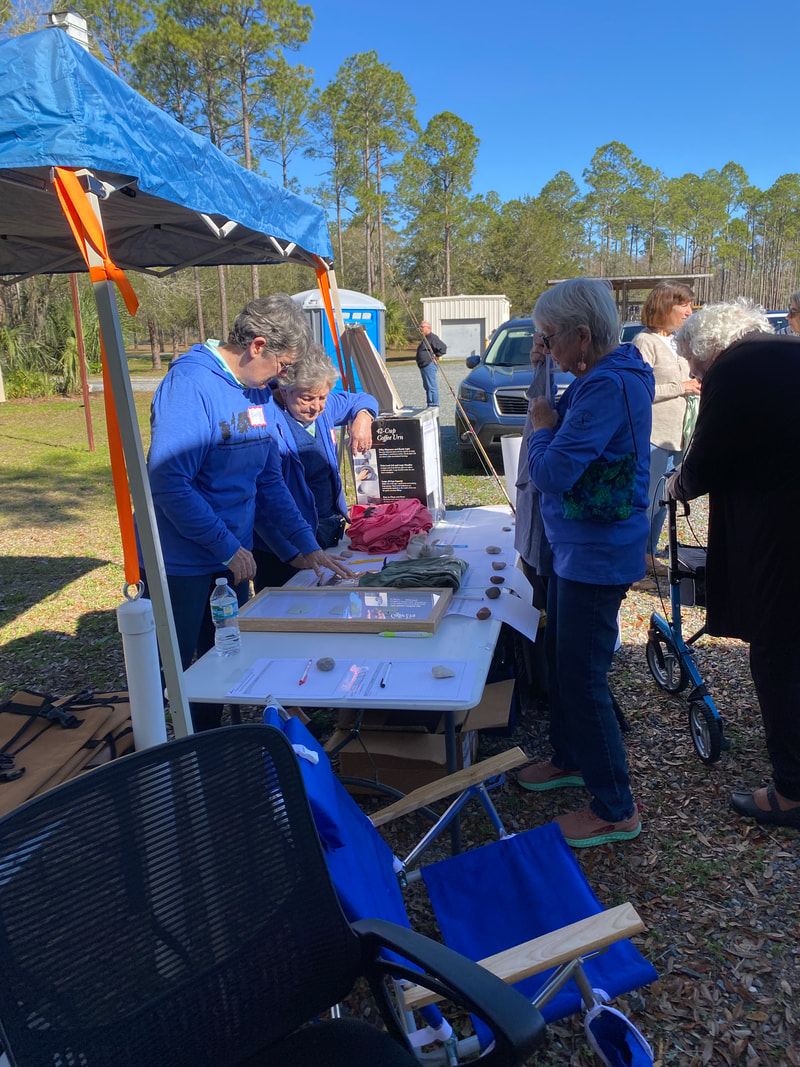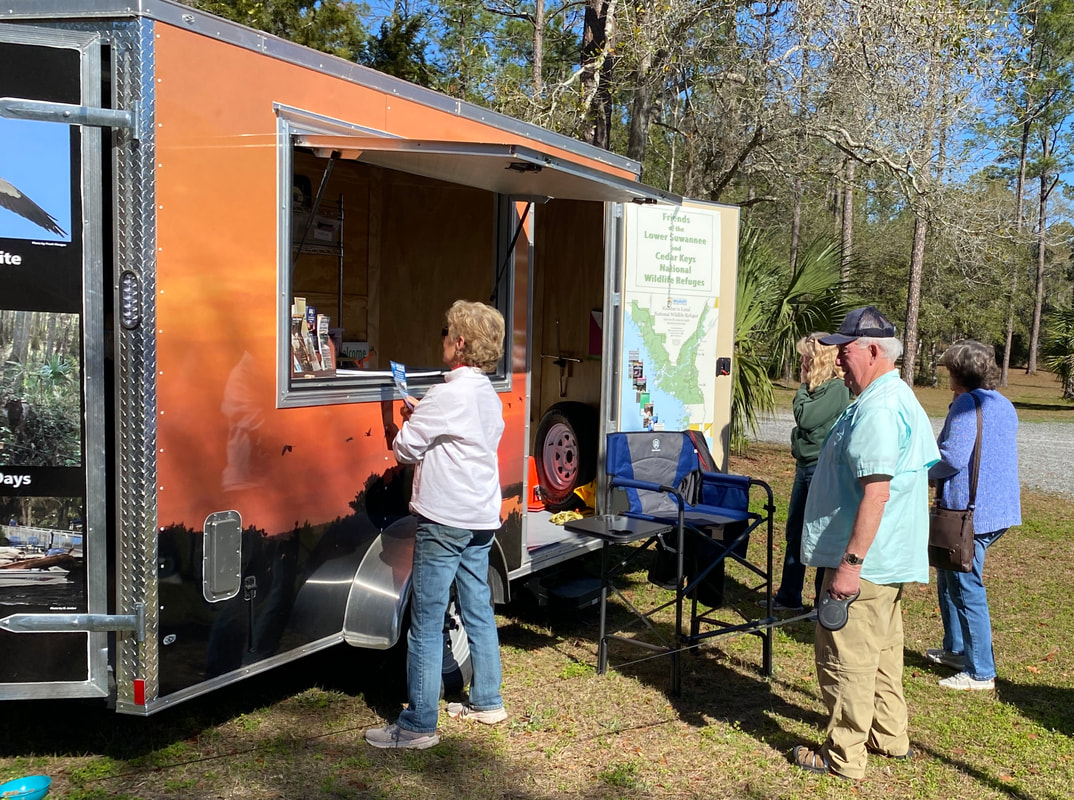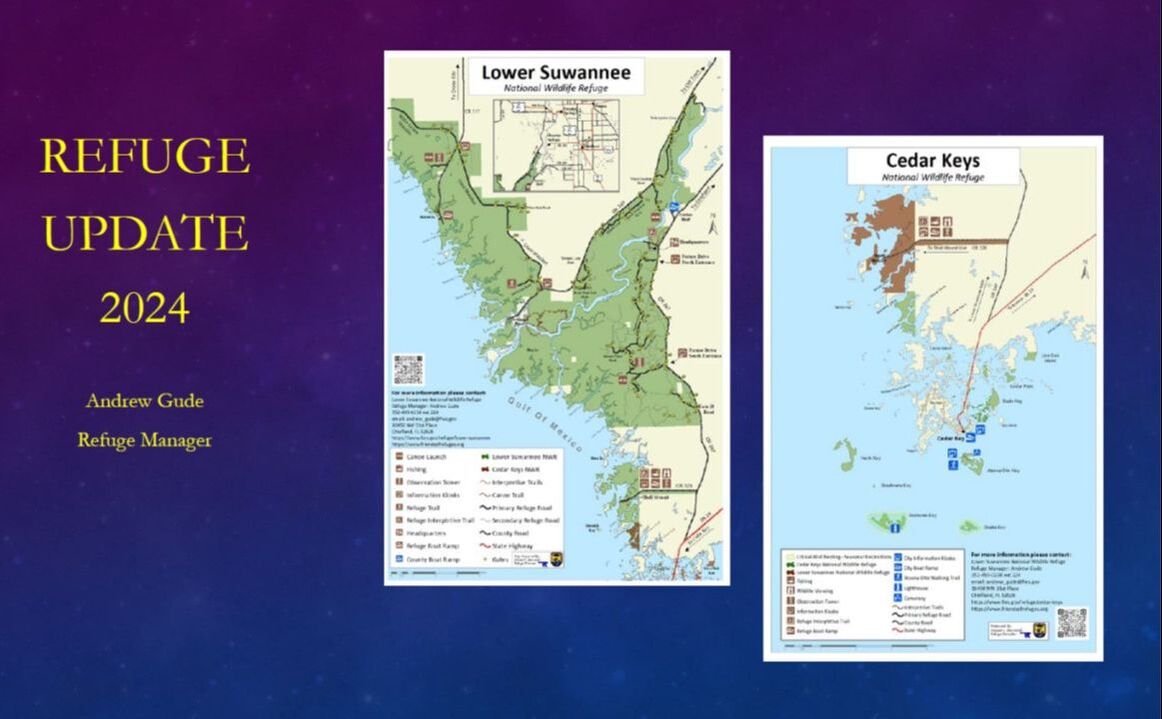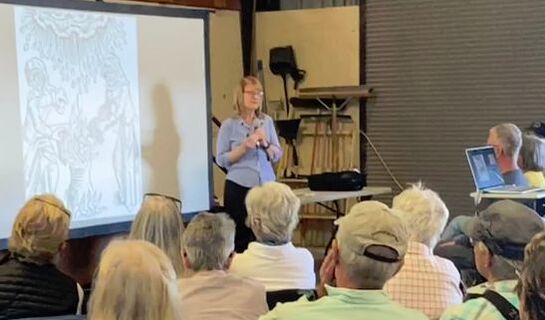|
On Monday, March 25th, at the Christ Episcopal Church, Andrew Gude will reflect on his time as manager of the Lower Suwannee & Cedar Keys NWRs, including what drew him to this job and what he’s learned. He will also speak about where the Refuges have been, what’s being done now and where they are headed.
The public is invited to a 4pm Meet & Greet with refreshments, followed by Andrew’s presentation at 5pm. Thanks to Cedar Keys Audubon for arranging this talk and inviting all of us.
0 Comments
Vista Main House Floor Project needs help. This will be a one or two day project, arranged soon, at a time that works for the volunteers. Friends' members Marc Woodmansee and Debbie Meeks removed the old, damaged vinyl from the kitchen floor. However, the adhesive did not come off with the vinyl. It took Debbie and board member Robin Gallup almost two hours on another workday to scrape the adhesive from a two-square-foot area. Not a volunteer task for the faint-of-heart! Please help :) Read more here. Email [email protected] if you might be willing to help rescue this floor and paint it to match the rest of the house. Friends needs help to greet visitors when the Refuge Rover goes to the Old Florida Celebration of the Arts in Cedar Key on April 6 and 7. Email [email protected] if you can spare some time to volunteer at the Rover.
On March 1, the Refuge Rover was at Dogs in the Park, an annual event sponsored by the Cedar Key Woman's Club and attended by every dog for miles around, as well as their humans. A grand time was had by all. Friends was happy to add a wildlife component to the doggy event. On March 9, the Rover was in the Town of Suwannee for The Lower Suwannee Art and Nature Festival. From 9 a.m to 3 p.m. Friends' board members Debbie Meeks and Debbie Jordan greeted at least 40 to 50 people, talking to them about visiting the Refuges and volunteering with Friends. They sold some Friends' shirts, bug spray and hats. Many visitors said they would join Friends online and were interested in our projects. Way to go Refuge Rover and crew!
The Open House has been rescheduled for Wednesday March 20 because bad weather is forecast for the original date. The next Open House will be on Wednesday, March 20 (not on Tuesday March 19 as originally scheduled) from 9 a.m. to 3 p.m. Visitors can climb to the Light Station and walk around the building. They cannot climb up to the light. The trail to the beach, on the back side of the island, was destroyed by the recent hurricane. Refuge staff have built a longer new trail to avoid the erosion caused by the hurricane. It is not as easy as it was to get to the beach, but hardy souls can explore the beach as they have at previous Open Houses. It is a lovely boat ride out to the island and a delightful way to spend a day on the Cedar Keys Refuge. Visitors can arrive at the island in their personal boats or pay for a shuttle service from the dock in Cedar Key. The shuttle is a good way to help the tour operators in their hurricane recovery. Refuge Manager Andrew Gude points out that it is important for visitors to note that Seahorse Key is an island almost three miles from Cedar Key. Access is only by boat. There are no amenities, such as food or water on the island. Restroom facilities are limited. Should there be a medical or other emergency requiring professional assistance or evacuation, response times could be lengthy. Please plan with this in mind. Seahorse Key is wonderful, but it is not a walk in the proverbial park. Friends' member and butterfly expert Barbara Woodmansee will lead the walk starting at 9:30 a.m. The walk will be along Barnett Creek Road on the Lower Suwannee Refuge. The Nature Drive Guide provides detailed directions to the walk location and surrounding area. The following is the information you need to know for the upcoming butterfly walk: The walk will begin at 9:30 a.m. at the point where Barnett Creek Road intersects with the Nature Drive. Participants are advised to park their cars along the side of the road near where Barnett Creek Road intersects with the Nature Drive. The exact location is at Mile 3.2 (N 5.7), (29° 18’ 19.23” N, 83° 03’ 45.09”).
The February News Brief and a blog post described plans for the Vista Pollinator Garden project led by Barbara Woodmansee. Several folks volunteered to help build it out. Subsequently, Barbara and Refuge Manager Andrew Gude decided to postpone getting and spreading fresh, good soil until fall. In the fall, larger plants that require less watering can be planted and the soil will have less time to become seeded with weeds before the plants take over the space. Project leaders will stay in touch with the volunteers. Friends has an active Request for Proposals for contractors interested in working on the Cook's House roof and other items. Additionally, former president Debbie Meeks and her crew of volunteer expert carpenters are working on restoring the Cook's House windows to their historic beauty and utility. In the mean time, Debbie and board members Robin Gallup and Jeri Treat have been curating the Main House. Look at the gorgeous results. Are you thinking you might like to help get the house ready for the public to visit? Note the floors in these photos. The old kitchen flooring had to be removed. It left a lot of adhesive to be scraped so the wood floors underneath can be refurbished and painted. Might you be willing to spend a day scraping floors? Email [email protected] and join the, hopefully, one-day floor project. We will be in touch to find a day that works for the willing! Karan and David Barber are new residents of the area near the Lower Suwannee and Cedar Keys National Wildlife Refuges and new members of our Friends group. This is a story by Karan about their previous experience as NWR Resident Volunteers: For my husband and myself, being resident volunteers was truly a bucket list experience. We served at the Lake Mattamuskeet National Wildlife Refuge. Lake Mattamuskeet is the largest natural lake in North Carolina and world renowned for the over 200,000 migratory waterfowl who winter there. We had visited the Refuge a couple of times before applying to be resident volunteers. The lake is located in coastal Hyde County, one of the lowest populated areas in North Carolina. This is very important to note if you plan to get fuel on a Sunday (or after 9 pm) or groceries or fast food or restaurant or camp nearby. Our visits did not achieve our goals to see; a 20,000 flock of Snow Geese, all the Northern duck species, not to mention the Ibis, Black Crowned Night Heron, Tundra Swans, bobcats, river otter, gray fox, and many, many others on my list. This was very frustrating as there was a constant chorus of Snow Geese heard throughout the day and night. So we decided to apply to become NWR Resident Volunteers. Once our applications were approved and we were properly vetted the adventure began. We signed up for a three month stay during the peak of migration from January to March 2016. The wildlife was glorious! What we learned was amazing and the natural world we witnessed was incredible. We manned the Gift Shop and Visitor Center. And I was able to shadow the wildlife biologist in my off hours to assist in the daily bird counts. Here are a few of the amazing scenes we captured. Currently the Lower Suwannee NWR has two sets of Resident Volunteers. Kathy and Dusty Dusterwinkle have served have been coming seasonally and staying on the Dixie County side of the Refuge for 10 years. Robin and Rick Gallup have served ion the Levy County side of the Refuge for 4 years. They are all Friends members and Robin was just elected to the board. If you have a spot you love and want to truly experience APPLY! Below is some good-to-know information about becoming a NWR Resident Volunteer below. I have to say -- If you have a Refuge you love and want to truly experience APPLY! What is the program?
This information is based on Karan's own personal experience and the lessons she and David learned while participating in the National Wildlife Refuge Resident Volunteer Program. If you have questions, comments, and new information, Karan would be pleased to hear from you. Email [email protected] and we will forward to her for you.
Suwannee 22 (in White) arrived in the Florida Panhandle on 4 March. Learn to listen for their calls here. According to Researcher Gina Kent of the Avian Research and Conservation Institute (ARCI) the Swallow-tailed Kites have been seen in the local area. Sightings have been reported from the following Florida Counties: Brevard, Dixie, Duval, Charlotte, Citrus, Hillsborough, Lake, Leon, Levy, Marion, Palm Beach, Polk, River, St. Lucie, Volusia, Wakulla, and Washington. There even have been a few in the state of Georgia! Friends helped support the tracker that has recorded travel by Suwannee 22, the Swallow-tailed Kite for the past several years. The tracker provided Refuge Manager Andrew Gude with new and abundant data on the use of the Refuge by Swallow-tailed Kites, important information for decisions about land management. The project is part of ongoing ARCI research, whose Executive Director Dr. Ken Meyer was the featured speaker at our 2020 Annual Meeting.
Take Action:
If you see Swallow-tailed Kite nesting behavior, help ARCI by reporting and observing your nesting kites through the breeding season. Follow the Eyes on Kites program here: https://www.arcinst.org/eyes-on-kites/ Learn more about Swallow-tailed Kites here. Hawkwatch International is a great site for Raptor lovers! Looking to hone your bird ID skills? Try the Merlin Bird ID app or the Bird Academy from Cornell Lab. The Lower Suwannee National Wildlife Refuge supports excellent butterfly habitat. In a single spring day as many as 54 species have been observed along the Nature Drive! Butterflies of the Lower Suwannee National Wildlife Refuge is a guidebook for beginners and all butterfly lovers. It is the result of Barbara Woodmansee’s dedicated citizen-science survey work. Barbara is a long-time volunteer and former board member of the Friends of Lower Suwannee & Cedar Keys National Wildlife Refuges. Her surveys, going back to 2009, informed Refuge staff and helped them enhance pollinator habitat in a number of ways, such as by adjusting their mowing schedule along roadsides and trails. Barbara’s photographs are compiled in the guide to help with butterfly identification and encourage visitors to appreciate and support the diversity of all our wildlife. The guidebook has been so popular that we have only 3 copies remaining in stock. We are updating with the four newly documented species that have been identified since the first edition was printed. You can contact Barbara with questions, comments, and new species sightings at [email protected]
Plans are moving along, somewhat more slowly than we expected when we wrote about this project in February. We will wait a while to see the results of the possible grant, and to assure that we have plenty to plant when the soil arrives so as not to encourage weed incursion. Thanks to those who have already indicated a willingness to help. We will stay in touch. Friends Submitted a Letter of Intent to Apply for a Grant:
The NEEF Biodiversity Project invited nonprofits to send a "letter of intent" describing how they would improve pollinator habitat if awarded a $50,000 grant. You betcha, Friends submitted. Competition is hot. There are only three awards, nationwide, for which we are eligible. Nevertheless, our letter is in the hopper. We should hear before the April News Brief Friends lucked out again this year! Like 2023, the sun was shining and the day was delightful. Everything was ready and awaiting the first members' arrival at 9:30 a.m.. They signed in and visited the information tables to chat about the past and coming year's activities and accomplishments. They shopped for Friends merchandise and at the silent auction tables. They hung out at the Friends new Refuge Rover Trailer. The presentations by Refuge Manager Andrew Gude, and Friends' President-elect Ron Kamzelski gave broad and deep overviews of Friends actions and impact and achievements on the Refuges. The slate of officers and directors was approved by the membership. The financial status of the organization was reviewed. Brandon Imhoff, of Unlimited State of Ability, made a powerful presentation not only about accessibility but about the magic a wildlife refuge can provide. He related how he and his girlfriend’s first visit to our refuge was such a perfect day and experience that it made his plans to propose marriage easier and more special. He and his colleague, Michael Dumas, provided members with lots of information and demonstrated some incredible mobility equipment, making Friends all the more enthusiastic about enhancing the accessibility on our refuges. Incoming President Denise Feiber introduced the featured speaker, award-winning author and environmental journalist Cynthia Barnett and her presentation on Rain! We were honored she agreed to present and was received with great interest and enthusiasm. A new member said, "The speaker was amazing! I am planning to read all her books." A board member wrote, "The talk was one of the best! Who thought you could make such a great talk about Rain! Lunch was a highlight, as always, with the feast prepared by local stars Ken and Rose McCain. The River Trail Walk, led by John Thalacker, had more than a dozen participants. The Vista visit had at least that many and especially attracted members who had not previously seen the property. Some hearty folks participated in both walks and spent time with Brandon and Mike discussing the accessibility equipment in action. See you next year. Save the date -- Saturday, February 22, 2025.
|
Archives
June 2024
|

Friends of the Lower Suwannee & Cedar Keys National Wildlife Refuges
P. O. Box 532 Cedar Key, FL 32625 [email protected] We are a 501(c)(3) nonprofit organization. |
|




